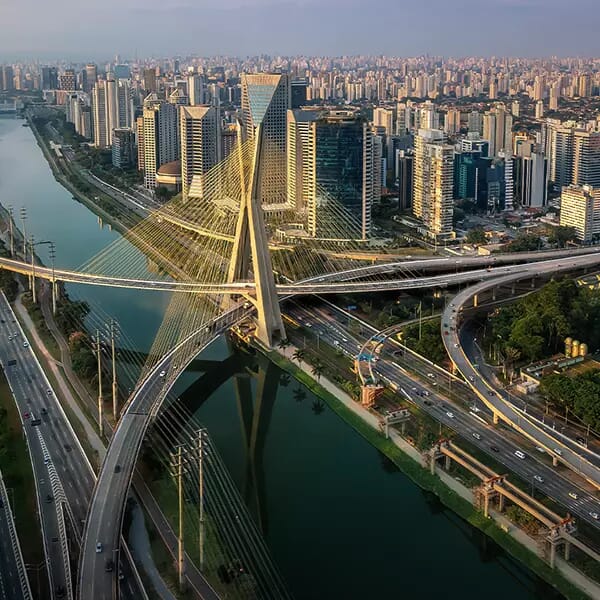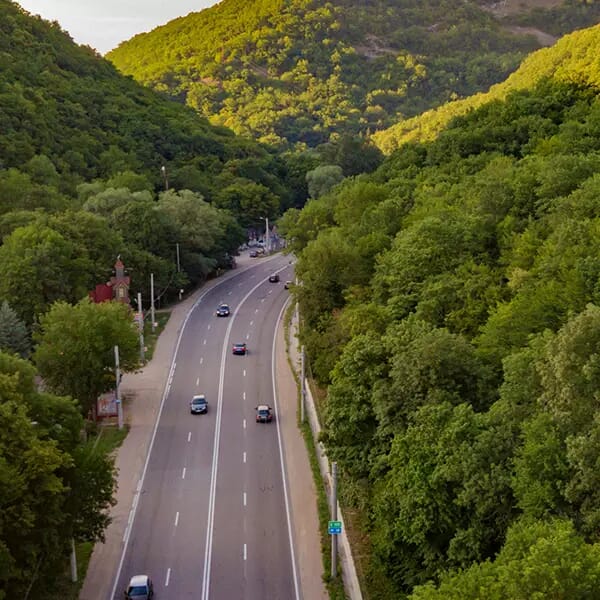 Credit: Leungchopan / Envato Elements
Credit: Leungchopan / Envato ElementsFostering Infrastructure Integration in India
Integrated development
Development in this space is already underway with Delhi Mumbai Industrial Corridor (DMIC) and Dedicated Freight Corridors (DFC) becoming operational. These corridors have paved the way for greater opportunities to come up. The industry participants believe that leveraging on this infrastructure should lead to a reduction in logistics cost.
One must be cognizant of the two aspects that are to be dealt with in infrastructure, which are, ‘shortage’ and ‘shortcomings’. These are the major problems the sector is grappling with. DFC is likely to address the problem of ‘shortage’ as there aren’t enough multimodal terminals connecting the rail lines. The next problem of ‘shortcomings’ is yet to be addressed, which is the requirement of minimum size of a good multi-modal terminal to be in place.
Historically quality infrastructure has been a rare commodity, finding a location with good intermodal connectivity has been rare leading to a few consumption centres becoming popular. This results in certain locations garnering a lot of interest with multiple small multimodal terminals. These locations end up becoming supply surplus spots.
On a separate note, bringing down the logistics cost is another aspect that the industry struggles with– what is this high logistics cost that we allege in India? The standard barometer seems to be that 7 to 15% of the cost of the commodities is ‘supposed’ to be the logistics cost. However, looking at the on-ground picture on may question is it really between these ranges that we allege it to be?
The way to go about sustaining inter-modality is through getting more and more networks operating terminals and facilities.
Investments in multimodal logistics
The developments in multi-modal space have a multiplier effect, however what is required is patient capital. These projects are usually funded by the government or government backed organisations.
How to get investments in multi-modal transportation hubs is a pertinent issue. For a multi-modal infrastructure to be set-up it requires land and multiple ministries to work in tandem. Unless the government does the spadework i.e. to buy the land, get the ministries together and invest in their share; it is impossible for a private developer to do this by themselves.
Private investors can contribute to portions of the play but cannot bear the whole responsibility. The role of patient capital kicks in stage 2 or 3 when the asset has been developed.
Requirement from Private sector stakeholders
One must shine light again on the opportunity presented by the DFC, i.e. a corridor bordered with industrial activity. This has led to a significant improvement in the road networks. Subsequently, there should be multiple locations with high quality intermodal connections.
The private sector needs to build upon this and work on integration of 2 networks. Even with DFC on rail, the first mile and last mile transport are not going to take care of the hub and spoke. The private sector needs to ensure that there is a good amount of information exchange and proper utilisation of assets for intermodal play to work out.
Multimodal play has been lagging due to the exchange between the road to rail that has been leading to incidental costs that outweigh the cheaper haulage offered by the railways. The advice to the private players would be to put energy behind technology and multimodal play as well as take advantage of the core- infrastructure that is in place after the DFC.
Institutional landscape
As the country embarks on the journey to build more transport and industrial corridors, the institutional landscape will need to be developed to support this journey. Absence of single window clearance, no land bank, are the few pitfalls plaguing the system.
Currently a lot of momentum is being induced in the manufacturing space and the contribution of the manufacturing sector to the GDP has been increasing. This growth is to be supported by the development of transportation.
National Industrial Corridor Development Corporation (NICDC) is one important arm working towards the development of infrastructure corridors in support of the state government level coordination committees. Also creation of the logistics division in the ministry of commerce is a welcome move. Their role is to coordinate within logistics space to facilitate connectivity. Simply put it is a holistic ministry that looks after the logistics and transportation.
There are different authorities and departments regulating the multi-modal terminals. It is difficult to achieve the required flexibility in infrastructure with the silo-based approach of development. A common guideline and a guiding authority in setting up the multi-modal logistics parks and making it more amenable to private sector investments by way of model concession agreement to bring in transparency in developing these facilities will definitely foster Infrastructure integration.
The government has created an asset class of industrial parks across the country (DPIIT) and are now trying to link it to various connectivity options available in these industrial parks to the major demand and consumption centers. Once the stock and flow combinations are met – logistics planning and performance would improve. This would help both the private sector and government to improve the efficiency in the logistics space. Then cross border connectivity issues can be worked on once the understanding of existing and required facilities are in place.
A challenge being faced by the integrators offering multi-modal solutions to the customers is the different rates of tax. Integration of various models and consolidation leads to higher tax rates for the same movement. It is difficult for the integrators to convince the customers to use the solutions due to the differential GST.
Also, it would be useful to consolidate the different types of forms and compliances required for various modes of transport, alternatively, to have similar kinds of forms to reduce the compliance burden.
The key is for the government to ensure the ease of doing business and competitiveness in the ecosystem.
Infrastructure costs
If development of infrastructure is taken care off, another critical element is cost of infrastructure services. Currently, the inland cost far exceeds the international shipping costs. The main components are land (which accounts for 35% of cost) and capex expenditures followed by the turnaround speed. Second aspect is transport – what cannot be ignored is that it is a two-way journey. In an ideal situation where it is a ‘back and forth’ trip, this would make the transport well balanced; otherwise the cost can double. This has led to transporters undertaking triangulations. Third, is the input cost – this is currently being met by the governments with almost 30% being the fuel.
One sentiment seen is that everyone wants to be an ‘asset aggregator’ rather than an ‘asset utiliser’ - How are the existing assets being utilised in an optimal manner before moving on to owning assets? Owning an asset adds a significant amount to the logistics costs. The cost of leasing in terms of owning is to be evaluated.
The operations are currently sub-scale. Logistics follows a cost-plus model where the cost is being billed to the customer. Unless there is an x optimal level in the size of operations the player is generally going to be operating at a suboptimal level. Some margin would be earned that covers for the costs, while satisfactory they are under performance level. This does not meet the potential of the business.
In the longer run things are to be sought out however the granular points should not be forgotten – there is going to be a constant battle for competitiveness.
Domestic expansion
Currently the international trade routes are cheaper than domestic transportation and infrastructure. There has been limited penetration in domestic space which makes it critical to analyse the elements that would lead to increased penetration in domestic space.
International trade is built on a strong network or ports and container systems that contribute to an efficient global network. Unfortunately, the replica doesn’t exist in the domestic containerisation. Setting up more domestic container terminals in the right locations and ensuring connectivity and regular service between points is crucial. One of key mechanisms to achieve efficiency is unitisation of cargo.
Utilization of waterways for domestic cargo movement needs to be explored to its full potential. This can contribute to increasing handoffs between different modes of logistics.
Multi-modal play also comes back into the picture as there is no point in moving cargo from point A to B if it does not connect the ultimate origin and destination making it essential to provide multimodal connectivity across the country.
Railways have to play a pivotal role in accelerating the containerization of cargo movement in the country. The DMIC and DFC provide opportunities for containerization of cargo.
Technology for efficiency
There are various regional disparities that require taking away the ‘silo’ practice and bringing in consolidation. Technology through geo tagging can help achieve this.
Technology is going to play a huge role in driving the multimodal game. The entire involvement of technology efficiency in logistics ecosystem can be looked at in two parts – Part A – investment in development of platforms that promote collaboration and resource sharing, Part B – Technology start-ups that address specific needs in logistics
The pandemic has forced the operators to adopt digitisation. The visibility of the cargo is stopped the moment it leaves the container. This implementation of visibility and collaboration till the last point has been challenging. This area has evolved, with many companies focused on logistics creating in-built solutions or adopting new technologies.
Today, having integration without technology overlay is not possible – for e.g. just by installing the Fastag – integration of toll plaza with tremendous efficiencies has been achieved. However, for such technology transformation, the technology definition has to come from the government like it did in Fastag. Without government support and intervention it is difficult to implement technology.
Automation is another space garnering a lot of attention. This is at the top of the value chain in the ecosystem. India is blessed with many start-ups; how they are encouraged or given an outlet to come into the mainstream is important. Also, while it is good to have start-ups; the larger organisations need to recognise and aid adoption of technology solutions.
Conclusion
What is required is a level playing ground for everyone. Unless the basic things addressing the ease of business for the customers are in place the development at grassroot levels would be difficult and reducing the logistics costs for the end user will remain a far fetched dream. On the infrastructure creation side cognizance is required on the role to be played by the government and private players. The government should ensure development of integrated infrastructure and make available base infrastructure to the private players and let the private players manage their profile. The logistics department by the ministry is likely to become the anchor to accelerate the development in logistics space.
Once the efficient networks coupled with the infrastructure and transportation are in place inter-modality will happen. While technology start-ups are to be encouraged, the large organisations to be nimble in their technology adoption and improvement. Another sentiment is that the industry is becoming cautious and embracing the ESG as it is one aspect that can no longer be ignored.
PwC
At PwC, our purpose is to build trust in society and solve important problems. We’re a network of firms in 158 countries with more than 2,36,000 people who are committed to delivering quality in assurance, advisory and tax services. Find out more and tell us what matters to you by visiting us at www.pwc.com.
In India, PwC has offices in Ahmedabad, Bengaluru, Chennai, Delhi NCR, Hyderabad, Kolkata, Mumbai and Pune. For more information about PwC India’s service offerings, visit www.pwc.com/in.
PwC refers to the PwC International network and/or one or more of its member firms, each of which is a separate, independent and distinct legal entity. Please see www.pwc.com/structure for further details.
Our Office
India - Mumbai
252 Veer Savarkar Marg,
Next to Mayor’s Bungalow
Ganpat Rao Kadam Marg,
Shivaji Park, Dadar
Mumbai 400 028
Contacts







